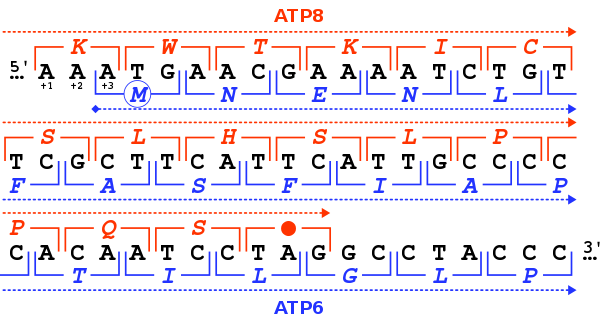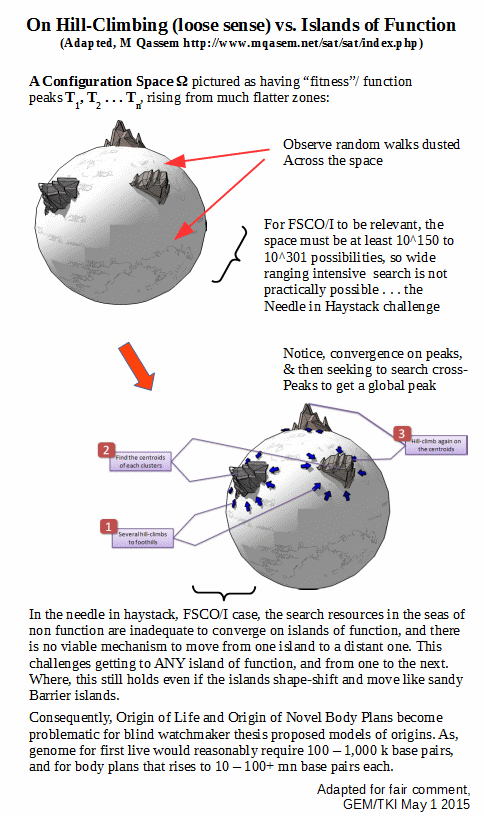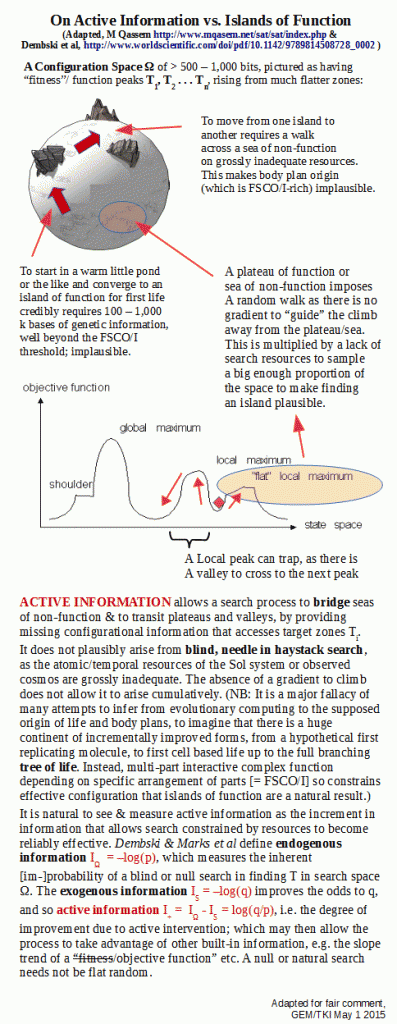Here, in human mitochondrial DNA — note the BLUE code start and the RED code stop; all HT to Wiki publishing against known ideological interest:

Complex interwoven code is of course doubly functionally specific, so it is exponentially harder to account for, other than by exceedingly sophisticated and creative intelligently directed configuration. Indeed, when I had to write machine code, I thanked my lucky stars 2114’s and 2716’s were by then affordable RAM and EPROM chips, and proceeded from there.
(BTW, a neighbour who was an engineer in an earlier era spoke of how people flew across North America just to see 1 MB of live RAM, in a video memory, a million dollar cost in itself.)
We know v good designers can interweave machine code. What’s the observed empirical evidence that such can emerge by blind chance and/or mechanical necessity?
As in ________ END
PS: Here is an illustration of the islands of function challenge:

Let’s add on islands of function and active information:
